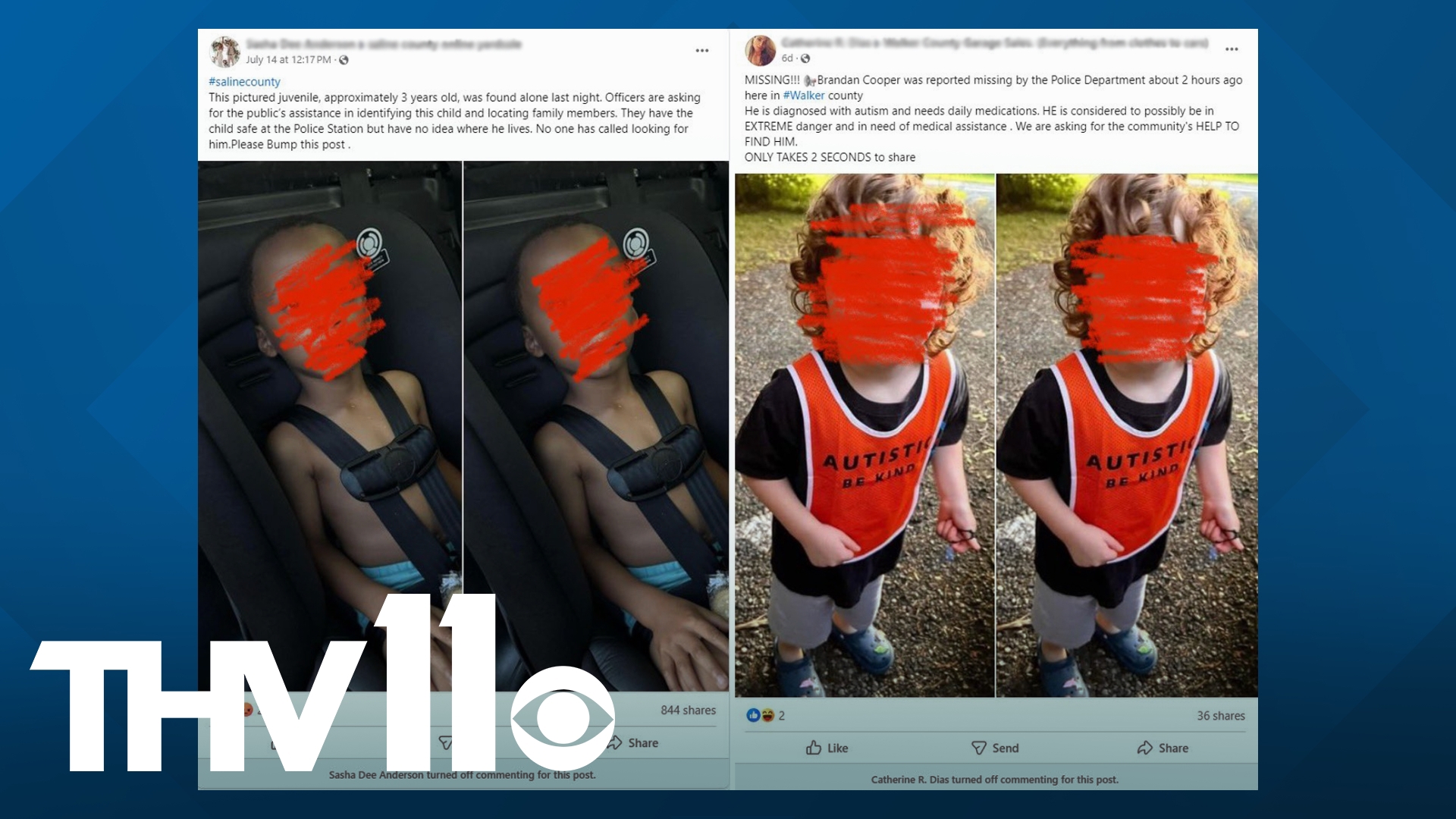LITTLE ROCK, Ark. — If you're on social media, you've probably seen posts of missing children, but now, scammers are using those as a way to take advantage of you and possibly steal your money.
The posts look genuine, but there are several things to look for to ensure their authenticity.
"I think it's offensive when people post fake or missing person posts as a scam because the intention is to take advantage of someone by pulling on their heartstrings," said Colleen Nick, founder of the Morgan Nick Foundation.
Nick knows firsthand what it's like to plead for the community to find a missing person when her daughter, Morgan, went missing almost 30 years ago.
"The scammers count on people wanting to really help because everyone wants to help when someone is missing," Nick said.
How to know if a post is real or fake
At first glance, it may look like a typical post for a missing child, older adult, or beloved pet. Still, scam posts don't include critical details, like a location, police department information, or how to contact investigators.
The posts initially appear in community or yard sale groups, and comments are usually turned off.
When you look at who created the post, there's limited information about the person. The person's profile usually has few to no pictures and no friends.
On Facebook, anyone can see a post's edit history. Check the history to see if there have been extensive changes to the information.
For example, one post we found claimed an Amber Alert was issued for a missing child. The next day, the post's author removed all the pictures, locations and information and replaced them with all new photos of a house for lease, including untrustworthy links that could put your information at risk.
What to do when you see a missing person post that is a scam
If you see these posts, you need to report them to the social media company so they can remove them.
You can also report the post to the FBI's Internet Crime Complaint Center.

